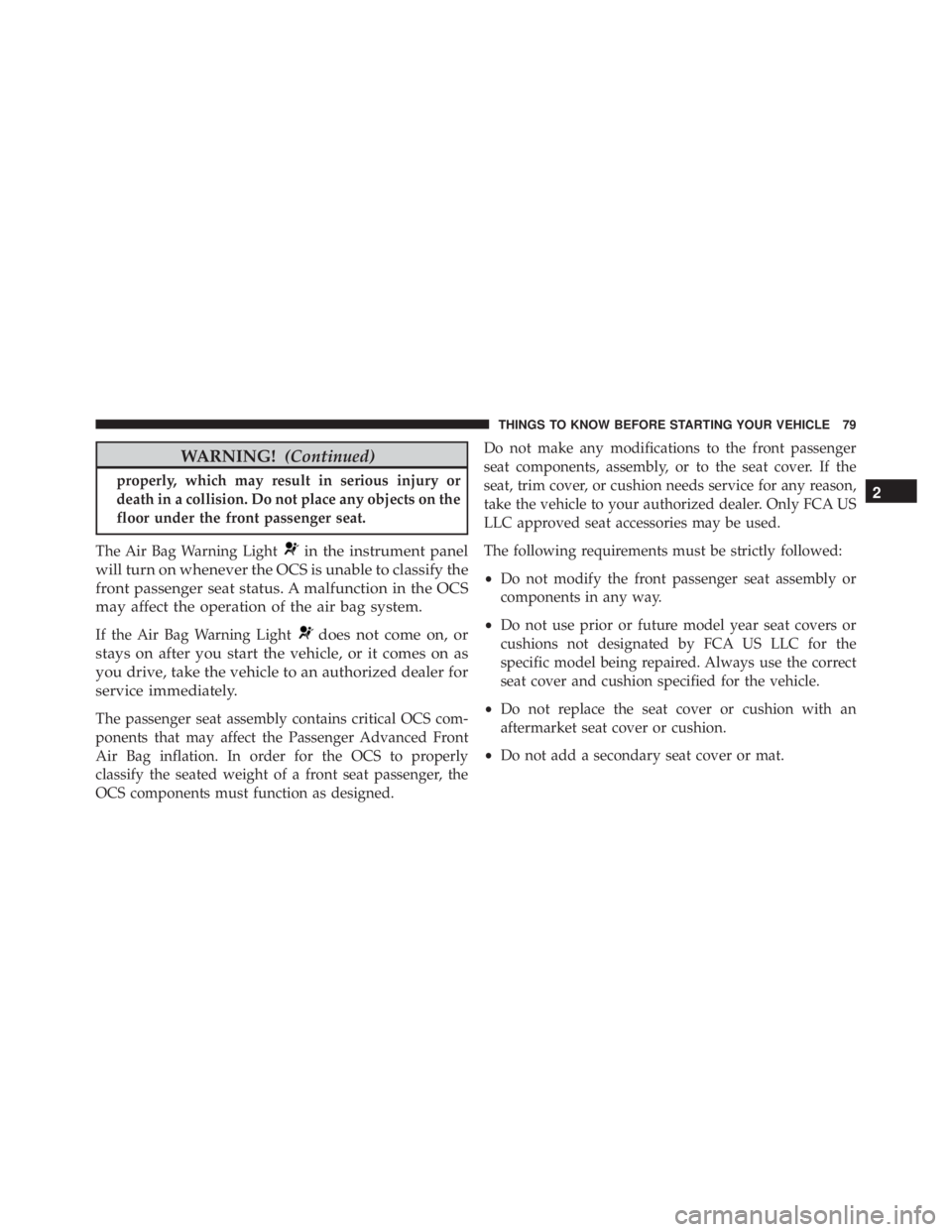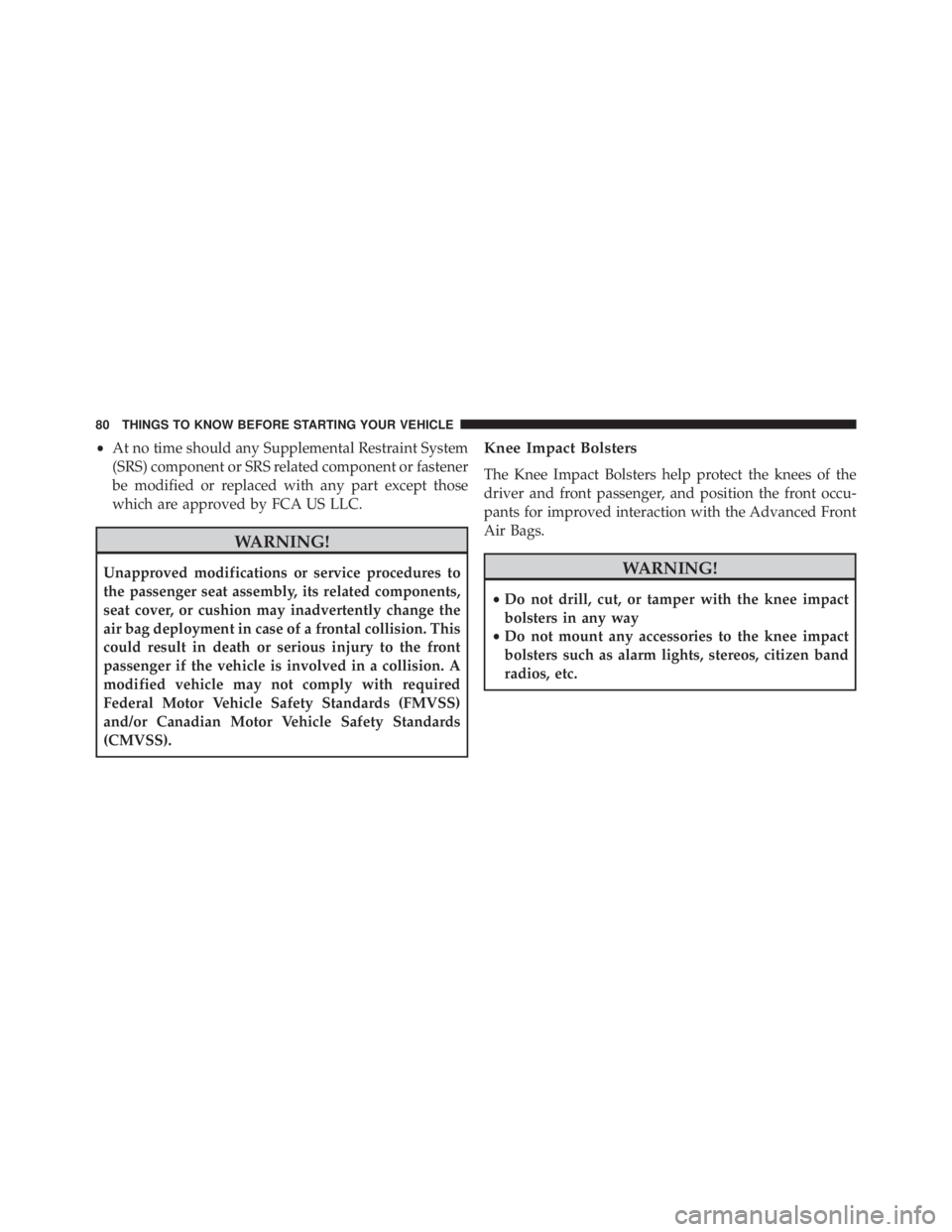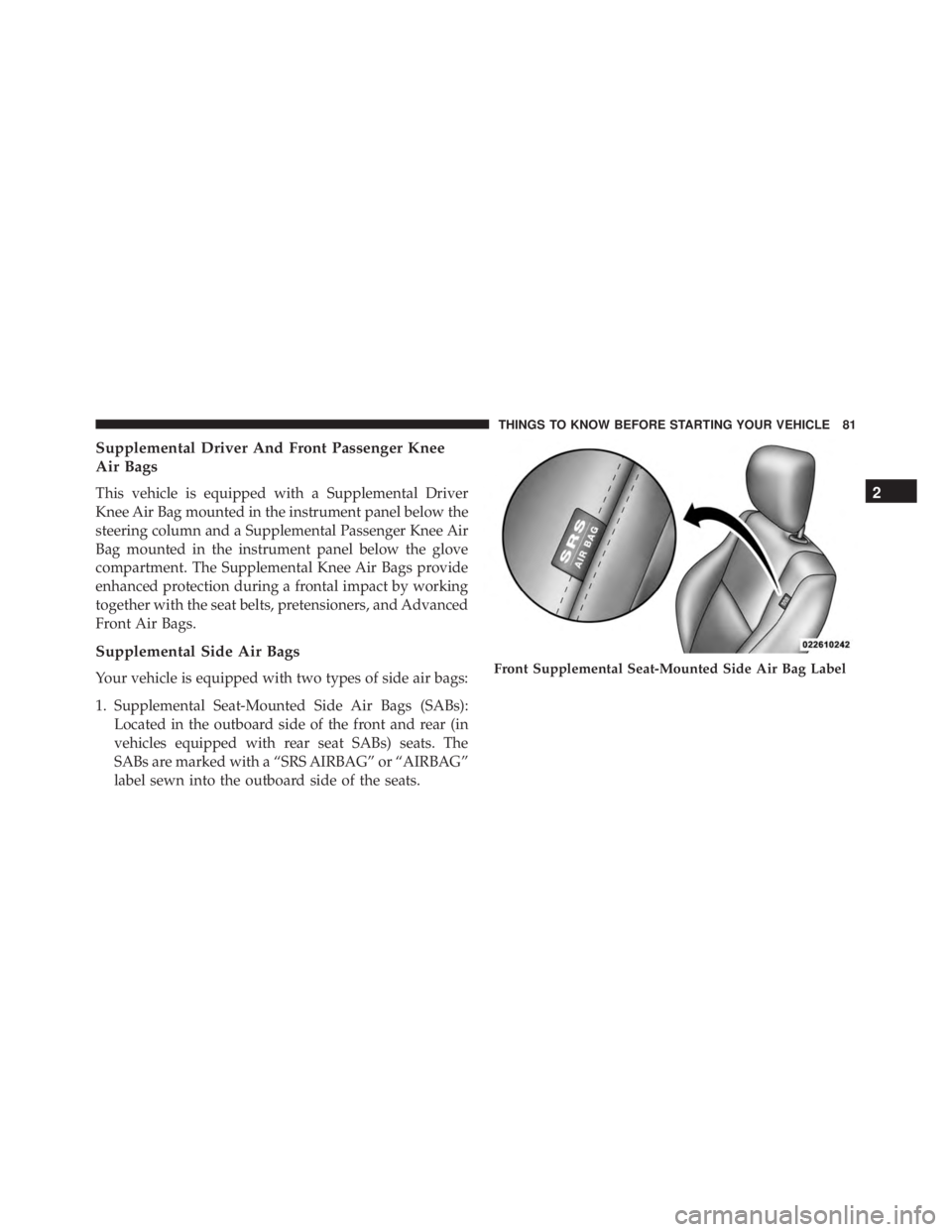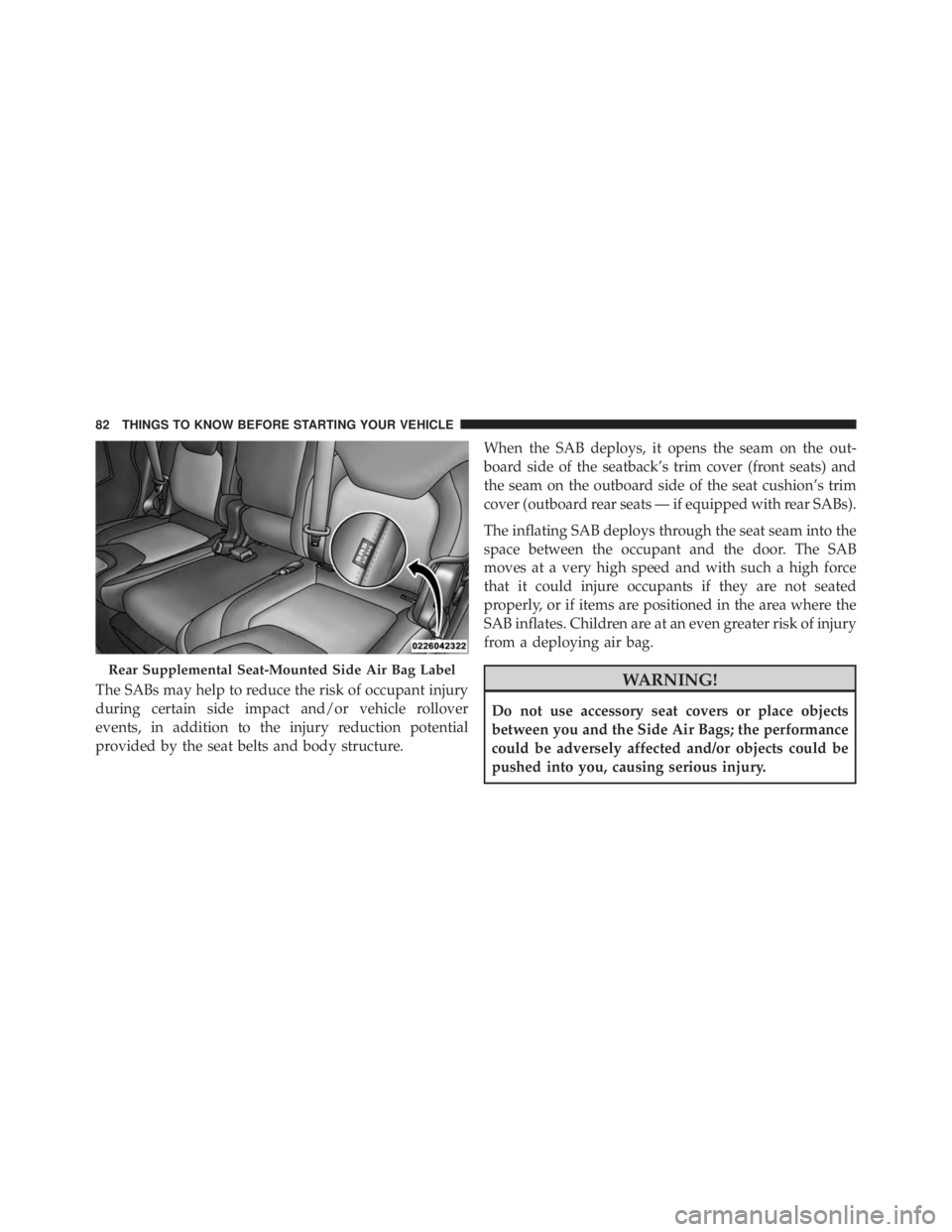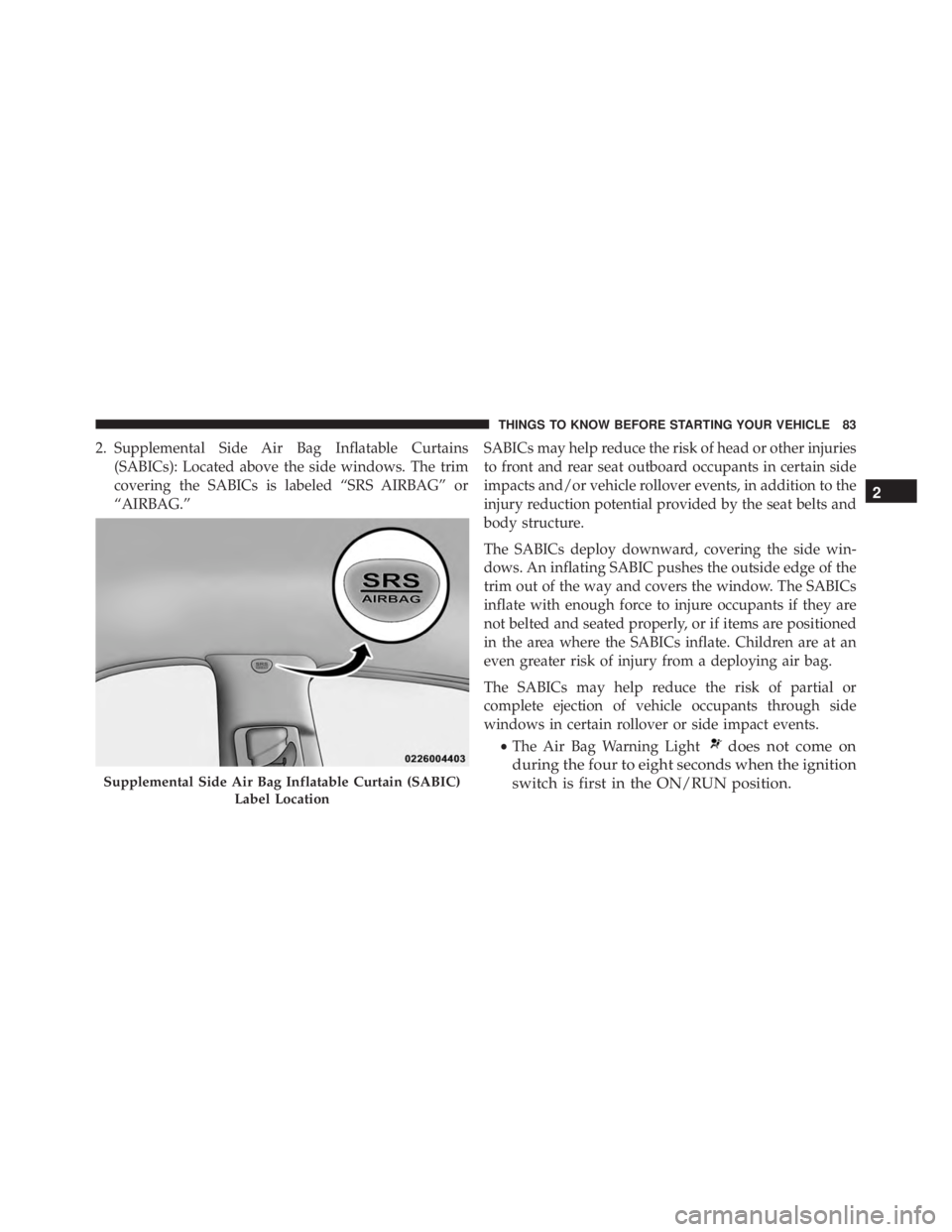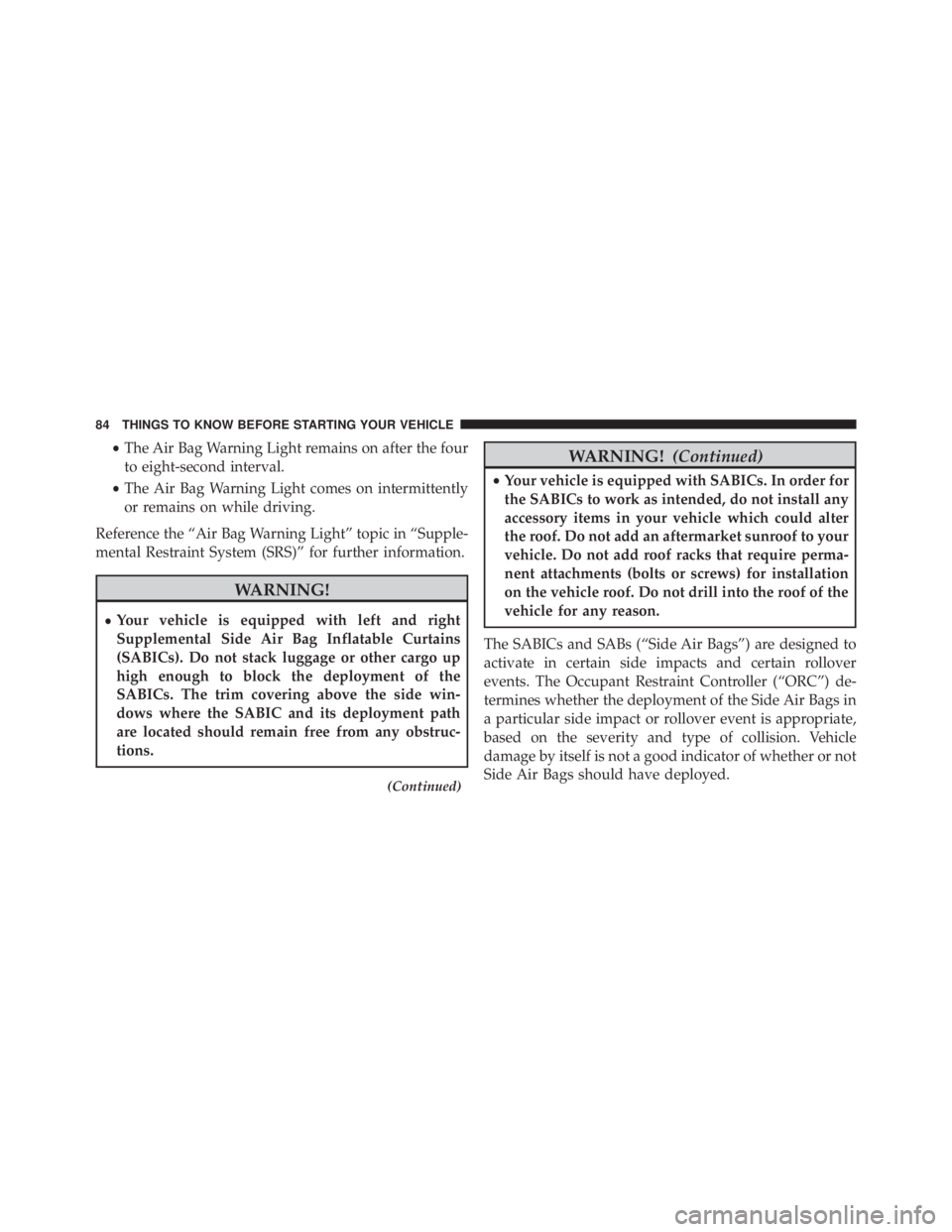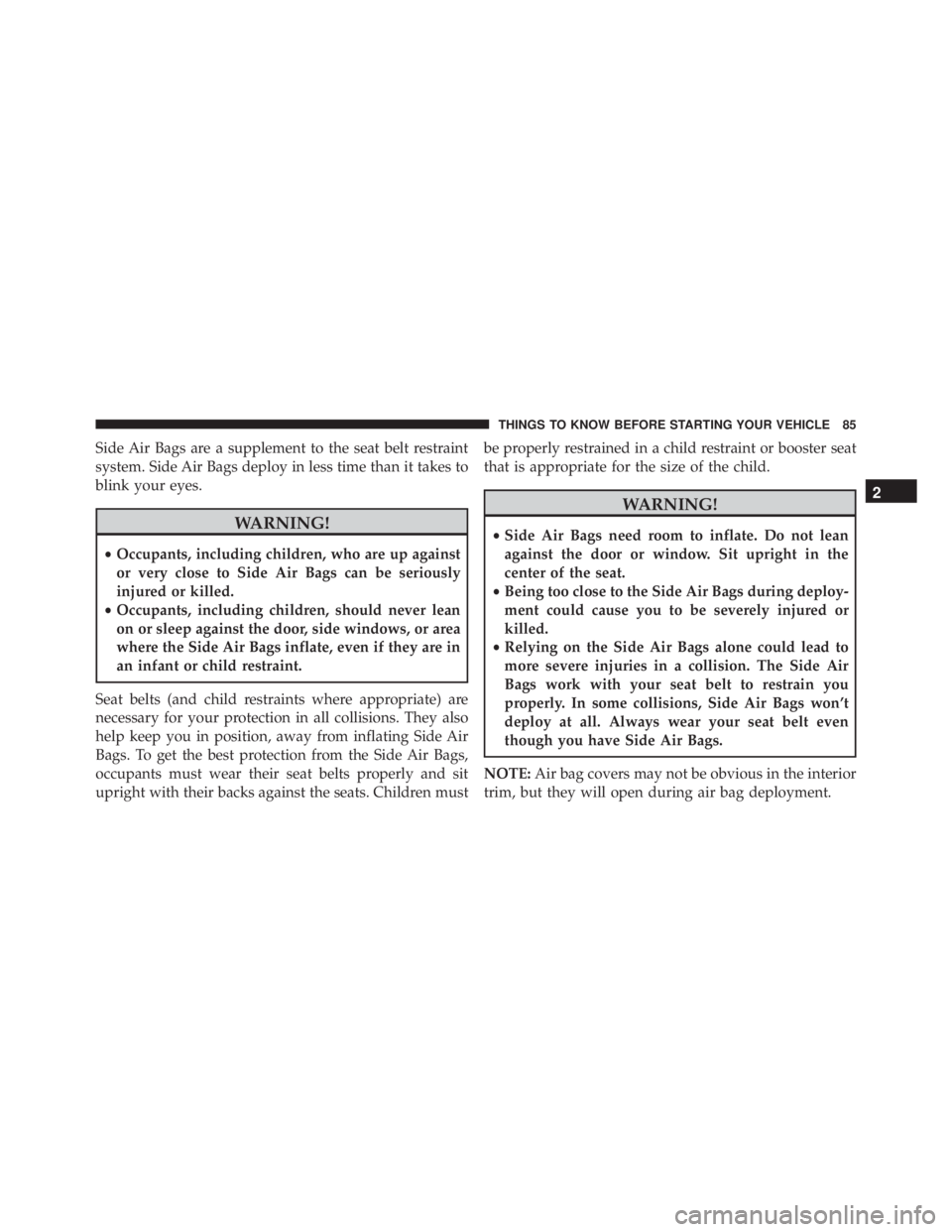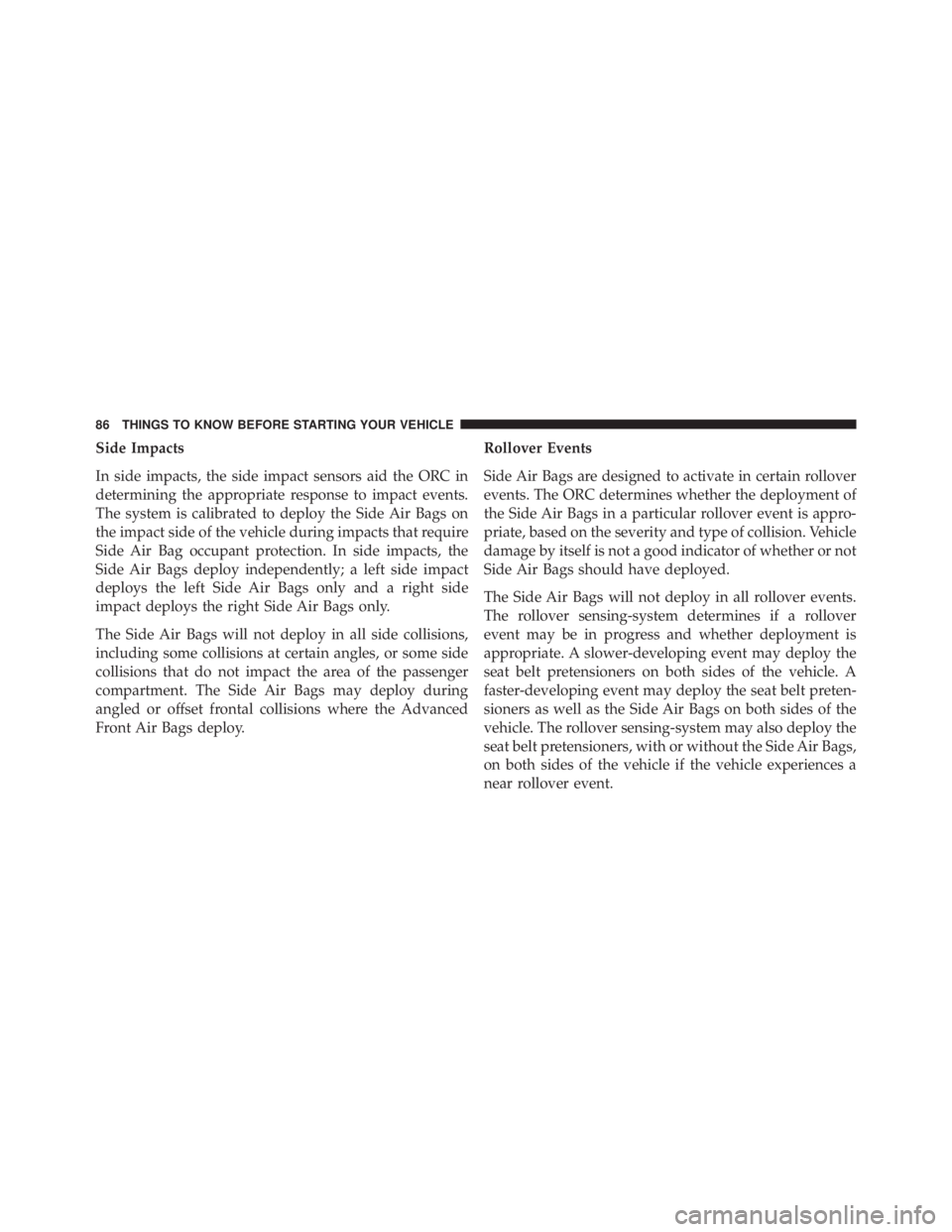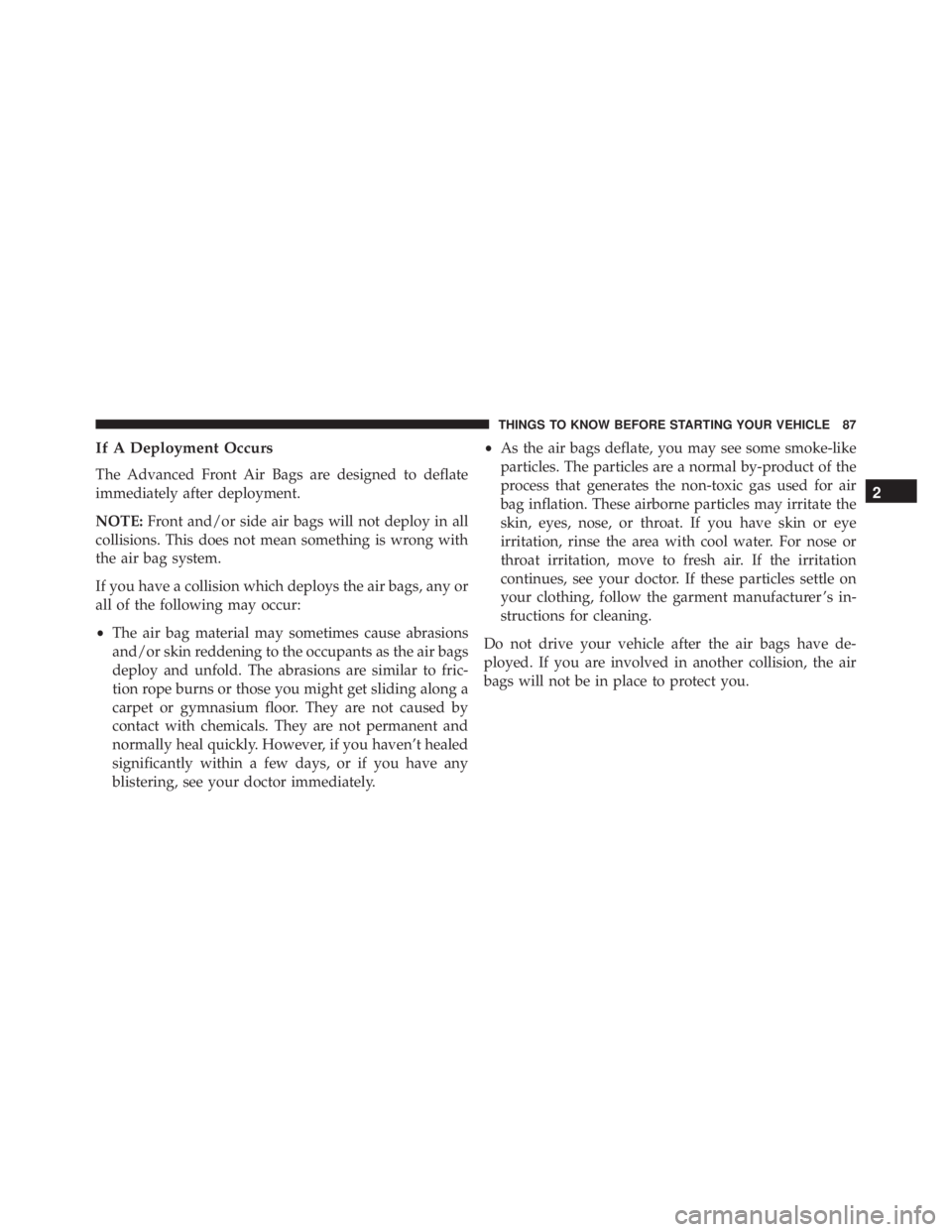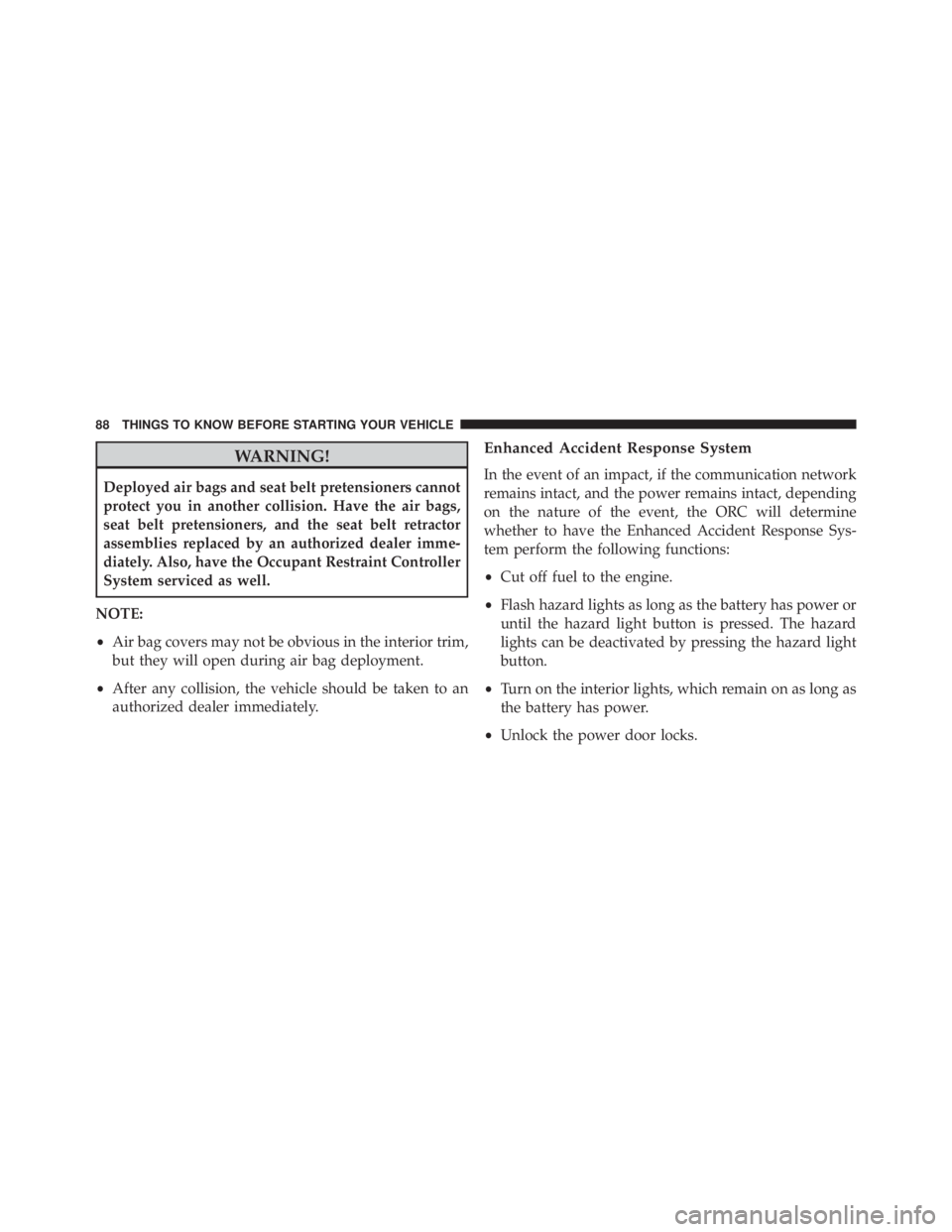The SABs may help to reduce the risk of occupant injury
during certain side impact and/or vehicle rollover
events, in addition to the injury reduction potential
provided by the seat belts and body structure.When the SAB deploys, it opens the seam on the out-
board side of the seatback’s trim cover (front seats) and
the seam on the outboard side of the seat cushion’s trim
cover (outboard rear seats — if equipped with rear SABs).
The inflating SAB deploys through the seat seam into the
space between the occupant and the door. The SAB
moves at a very high speed and with such a high force
that it could injure occupants if they are not seated
properly, or if items are positioned in the area where the
SAB inflates. Children are at an even greater risk of injury
from a deploying air bag.
WARNING!
Deployed air bags and seat belt pretensioners cannot
protect you in another collision. Have the air bags,
seat belt pretensioners, and the seat belt retractor
assemblies replaced by an authorized dealer imme-
diately. Also, have the Occupant Restraint Controller
System serviced as well.
NOTE:
• Air bag covers may not be obvious in the interior trim,
but they will open during air bag deployment.
• After any collision, the vehicle should be taken to an
authorized dealer immediately.
Enhanced Accident Response System
In the event of an impact, if the communication network
remains intact, and the power remains intact, depending
on the nature of the event, the ORC will determine
whether to have the Enhanced Accident Response Sys-
tem perform the following functions:
• Cut off fuel to the engine.
• Flash hazard lights as long as the battery has power or
until the hazard light button is pressed. The hazard
lights can be deactivated by pressing the hazard light
button.
• Turn on the interior lights, which remain on as long as
the battery has power.
• Unlock the power door locks.
88 THINGS TO KNOW BEFORE STARTING YOUR VEHICLE
